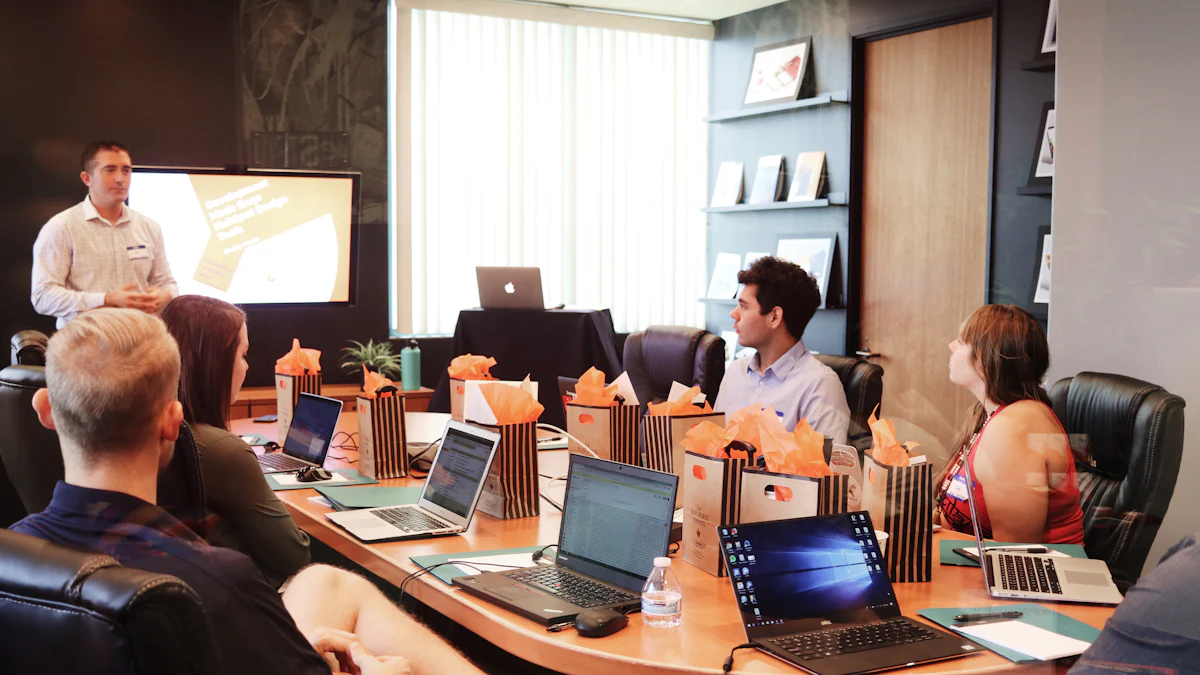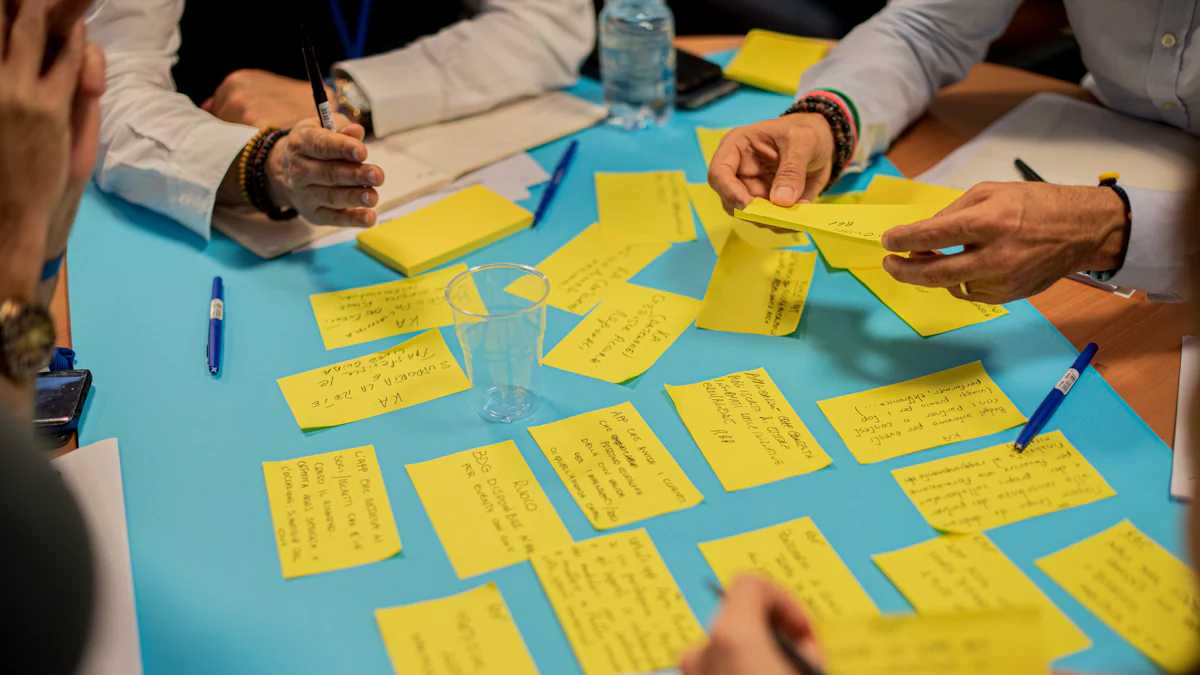Mastering Effective Meeting Norms: Examples for Team Productivity

In the realm of team collaboration, effective meetings serve as the cornerstone for success. By establishing clear meeting norms examples, teams can unlock a myriad of benefits, including enhanced productivity and improved job satisfaction. This blog delves into the significance of mastering meeting norms, offering insights on pre-meeting preparation, conducting efficient meetings, and post-meeting actions. Through this exploration, you will discover practical strategies to elevate your team's performance and foster a culture of impactful collaboration.
Setting the Stage

Pre-Meeting Preparation
When creating an agenda for your upcoming meeting, consider the key topics that need to be discussed. Prioritize items based on importance and relevance to ensure a focused discussion. Utilize an ordered list to outline the agenda items in a clear and structured manner:
Identify critical issues that require immediate attention.
Allocate time slots for each agenda item to manage the meeting effectively.
Include any necessary background information or materials required for discussion.
Before the meeting, distributing materials can significantly enhance participants' understanding and engagement. Use a block quote syntax to emphasize important details or instructions:
Sending out relevant documents or reports at least 24 hours before the meeting allows attendees to review them thoroughly.
By following these steps, you can streamline your pre-meeting preparations and set the stage for a productive discussion.
Establishing Ground Rules
To ensure effective time management during meetings, it is essential to establish clear guidelines from the outset. Consider implementing participation guidelines that encourage active engagement from all team members. Use an unordered list to highlight key points:
Encourage everyone to contribute their insights and ideas.
Avoid interruptions and allow each participant to speak without being interrupted.
Respect differing opinions and foster a collaborative environment.
When it comes to time management, setting specific durations for each agenda item can help maintain focus and productivity throughout the meeting. Remember, efficient time allocation is crucial for successful discussions.
Conducting the Meeting
Starting on Time
To commence the meeting promptly, begin with opening remarks that set the tone for productive discussions. Acknowledge each participant's presence and express gratitude for their time and contributions. By initiating the meeting in a positive manner, you establish a welcoming atmosphere conducive to collaboration.
Opening Remarks
When delivering your opening remarks, ensure clarity and brevity to respect everyone's time. Emphasize the meeting's objectives and the importance of active participation from all attendees. Encourage a mindset of engagement and shared responsibility to achieve successful outcomes collectively.
Reviewing Agenda
Before delving into discussions, take a moment to review the agenda with the team. Highlight key topics and objectives to provide context for upcoming conversations. Confirm that everyone is aligned on the meeting's purpose and expected outcomes to maintain focus throughout the session.
Facilitating Discussion
As you transition into facilitating discussions, prioritize encouraging participation from all team members. Create an inclusive environment where diverse perspectives are valued, fostering creativity and innovation. By actively involving every individual, you harness the collective intelligence of the group for more robust decision-making.
Encouraging Participation
Engage participants by soliciting their input on agenda items and encouraging them to share their viewpoints openly. Acknowledge each contribution respectfully, reinforcing a culture of mutual respect within the team. Remember that every voice matters in driving meaningful discussions forward.
Managing Conflicts
In instances where differing opinions arise, approach conflicts as opportunities for growth rather than obstacles. Managing conflicts effectively involves active listening, empathy, and a focus on finding common ground. Address disagreements constructively to reach consensus while honoring diverse perspectives within the team.
Post-Meeting Actions

Reviewing Accomplishments
When summarizing the decisions made during the meeting, ensure clarity and alignment on the next steps. Utilize an ordered list to outline the key takeaways and action items:
Summarize the main points discussed to reinforce understanding.
Clarify the decisions reached to avoid any misunderstandings.
Assign tasks promptly to responsible team members for effective execution.
By summarizing decisions and assigning tasks promptly, you set a clear path for implementation and progress post-meeting.
Follow-Up
After concluding the meeting, it is crucial to follow up on the discussed topics and action items. Use a block quote syntax to emphasize the importance of timely follow-up:
Setting deadlines for task completion ensures accountability and progress tracking within the team.
Additionally, providing feedback on individual contributions can motivate team members and enhance future collaboration efforts. Acknowledge valuable insights shared during the meeting using positive reinforcement techniques.
Benefits of Mastering Meeting Norms: Insights from Teams
Revisit norms continually to enhance team collaboration and productivity.
Display norms prominently during meetings for easy reference and adherence.
Conduct 'norms check-ins' to self-assess adherence and focus on improvement.
Utilize the 'plus/delta protocol' for constructive feedback and continuous growth.
Implementing these strategies can elevate your team's effectiveness and foster a culture of shared responsibility. Embrace the power of meeting norms to drive meaningful discussions, enhance decision-making, and achieve collective success. Start mastering effective meeting norms today for a more productive and harmonious team environment!
See Also
Effective Strategies for Running Productive Team Meetings
Creating a Compelling Agenda Template for Administrators Meeting
Perfecting the Hosting of Hybrid Zoom Meetings
Maximizing Team Collaboration with AV System Benefits
Advantages of Smart Meeting Spaces for Contemporary Enterprises

